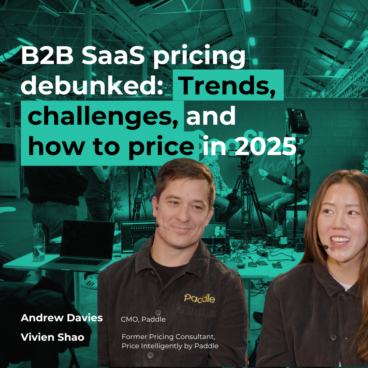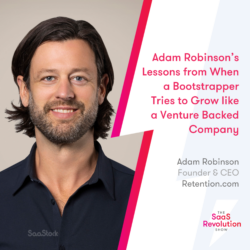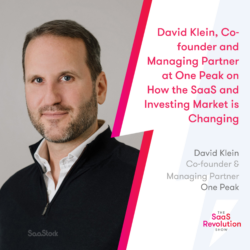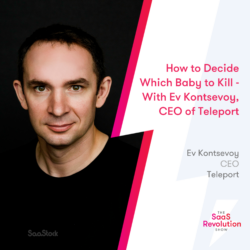For years, the go-to pricing advice for B2B SaaS was simple: “Raise your prices”. And it wasn’t bad advice, “Most people were undercharging, particularly as they were selling into enterprise,” says Andrew Davies, CMO at Paddle.
But since then, things have changed.
SaaS has matured, AI is here to stay, competition is higher, and billing models have evolved. As a result, founders face far more complexity when it comes to pricing their products.
We spoke to Paddle CMO Andrew Davies and Vivien Shao, former Pricing Strategist at Price Intelligently by Paddle who explained that “2025 isn’t the time for a blunt price hike”. Instead, SaaS leaders must refine their approach, embrace pricing innovation, and communicate value effectively. Watch below for their top tips on how to do it.
The evolution of B2B SaaS pricing – From subscription models to value-based complexities
SaaS pricing has traditionally been seat-based, built around a good-better-best tiered subscription model. It became popular because it was simple, predictable, and easy to understand.
Now though, we’re moving from SaaS “pricing 101”—which was really just about setting and raising prices—to a much more complex space with a variety of billing models tailored to different products, use cases, and customer segments. Vivien explained:
“What we’re seeing a lot now is people gravitating towards usage-based pricing because it’s more flexible for customers.”
With usage-based pricing, customers pay for consumption, rather than a fixed number of seats. The unit of consumption, known as a value metric, varies according to your product. For example, minutes of video for a video production tool or number of emails for an email marketing platform.
While more flexible for customers, this model is less stable for companies because usage can fluctuate. To balance this, businesses are “creating a hybrid subscription model” that combines subscriptions with usage-based pricing to “maintain some of the stability of a traditional seat-based model.”
For Andrew, this is what gets SaaS companies get to the “Holy Grail” of pricing:
“Usage-based pricing is gaining real traction because, in a world where we’re all trying to reduce costs and be more efficient, pricing on outcome means that you can sell into businesses with a very low ACV to start with but scale as you have impact. That’s the Holy Grail—where you start small and have a really strong multiplier as you scale the impact.”
AI’s influence on SaaS pricing strategies
Usage-based pricing isn’t new but adoption has been accelerated by the rise of AI SaaS products. Vivien explained:
“A lot of AI just doesn’t work with a seat-based model. When you think of automation tools, the more you automate a process, the fewer seats you’ll need. So they come at odds with each other.”
For AI SaaS, the focus should be on communicating the time and cost saving potential that comes with automation, in relation to the unit cost of your usage-based pricing model.
Example: Intercom’s Fin AI
Like many, customer service platform Intercom has long-used seat-based pricing. But that model didn’t work for its AI-agent, Fin. Vivien explained:
“What they’ve done with their new AI capability is create a secondary value metric to capture [AI] usage separately”.
Customers still pay per seat for the core product, but AI-generated outputs through Fin are paid for at $0.99 per resolved customer conversation. This hybrid approach aligns with the value delivered, without disrupting the company’s existing model.
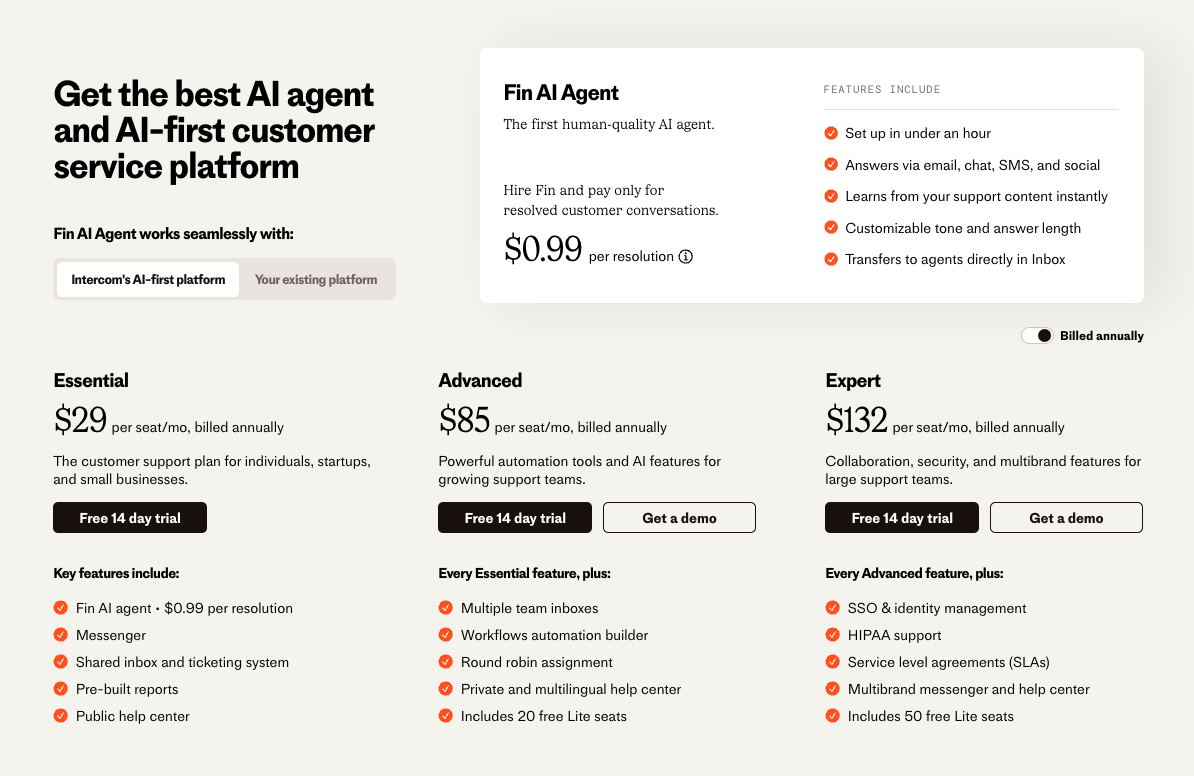
Hear more about Intercom’s approach to AI from Co-founder and CSO Des Traynor
Biggest B2B SaaS pricing challenges
Remember, AI products and outcome based pricing are still new. Buyers are used to traditional tiered subscriptions. This makes your biggest challenge how to communicate pricing changes to both new and existing customers.
Moving customers from legacy pricing and introducing new models on your website is hard to get right. According to Andrew and Vivien, it’s best to ease the transition with tactics like shrinkflation, add-ons, and localisation that make a change feel more gradual.
Vivien’s key advice? “Communicate clearly and communicate often.”
Be transparent in your pricing and listen to customer concerns. Where necessary, you might need to offer an opt-out or direct access to customer support if a price change will have a material impact on customers.
Key takeaway: “Start, test, iterate”
Pricing is never “set it and forget it”. Even a minor pricing tweak can drive major revenue growth: “McKinsey ran a study and found a 1% price increase can lead to an 11% increase in profitability.”
Yet despite the revenue opportunity, many SaaS companies delay updates because no one owns pricing. To avoid neglecting pricing (and leaving revenue on the table), Vivien recommends creating a pricing committee with stakeholders from finance, product, sales, and marketing—with an appointed decision-maker. This creates accountability and a regular cadence for reviewing and refining pricing and packaging.
